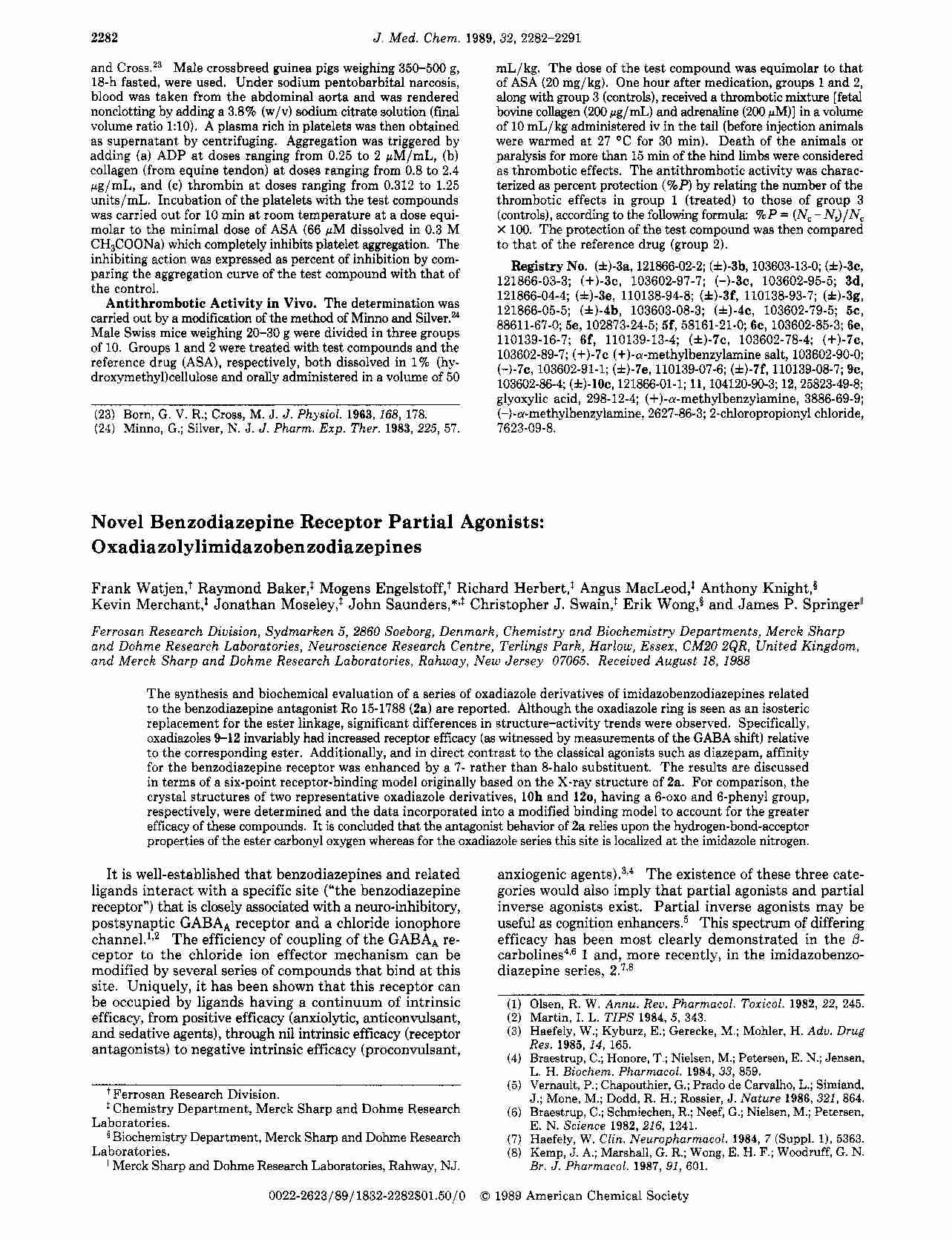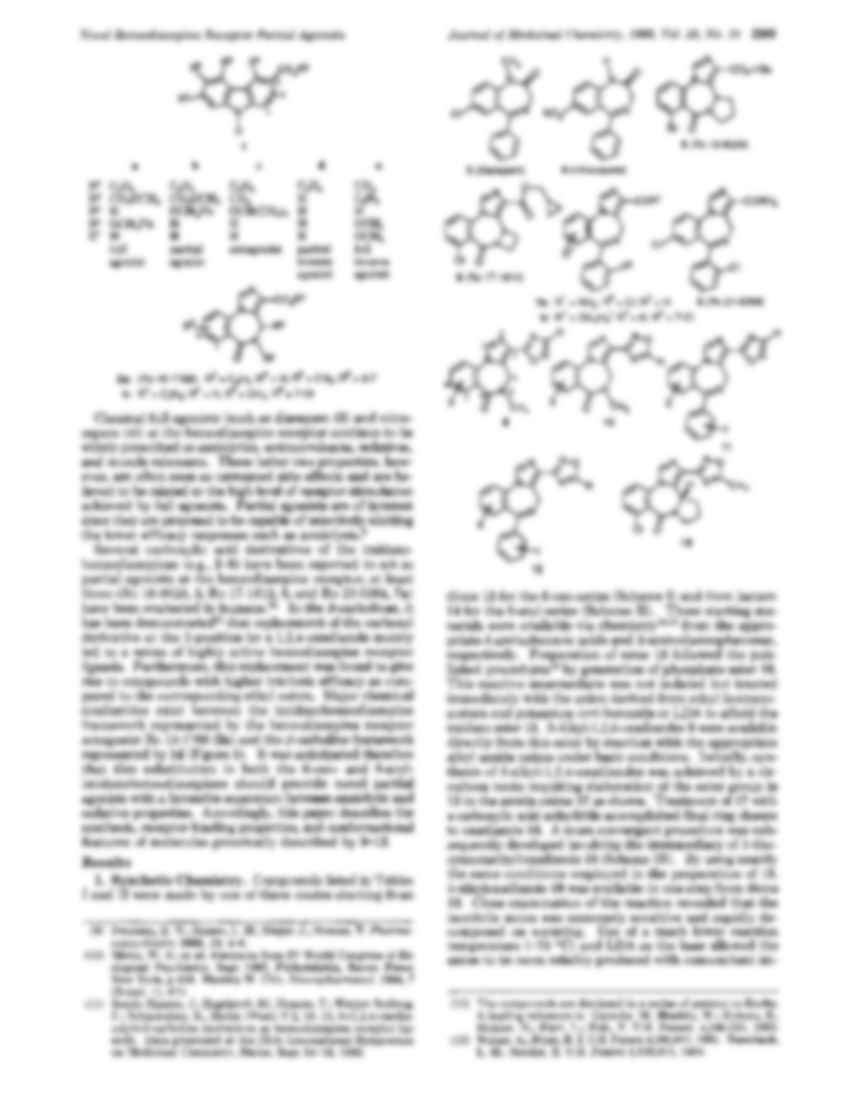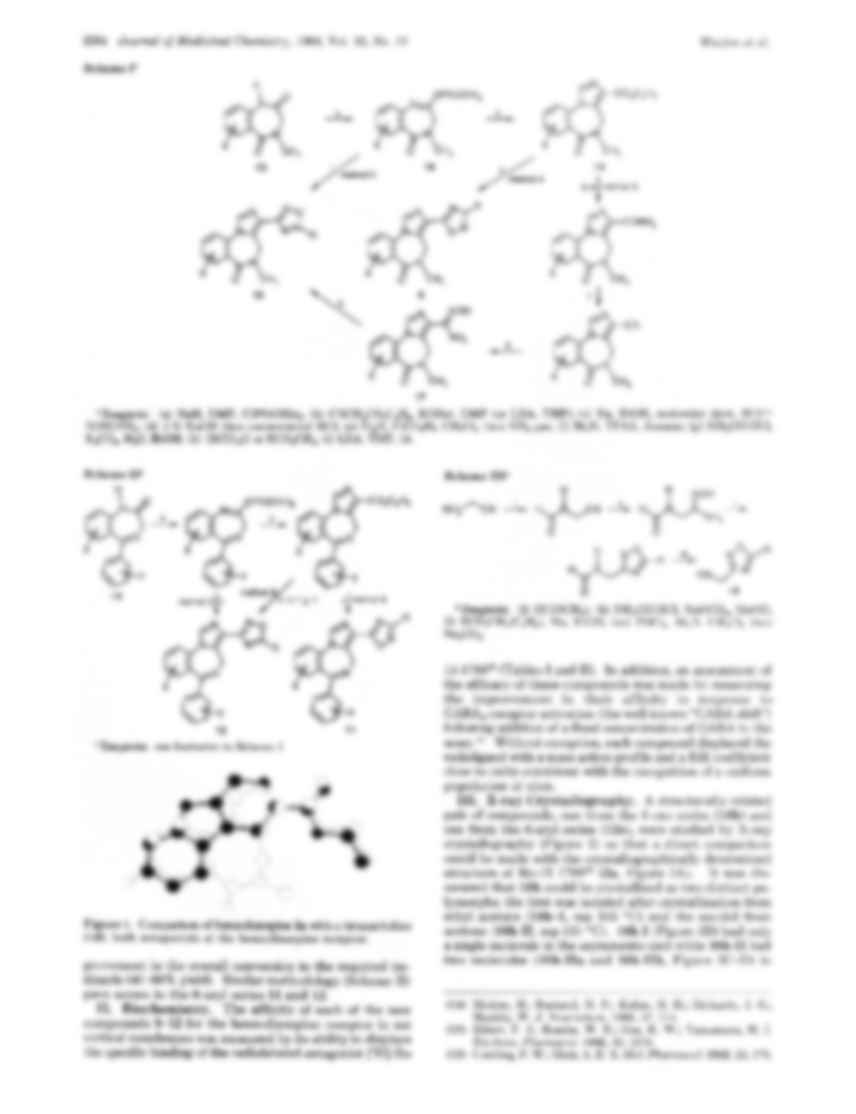J . Med. Chem. 1989,32, 2282-2291
2282
and Cross.23 Male crossbreed guinea pigs weighing 350-500 g,
18-h fasted, were used. Under sodium pentobarbital narcosis,
blood was taken from the abdominal aorta and was rendered
nonclotting by adding a 3.8% (w/v) sodium citrate solution (final
volume ratio 1:lO). A plasma rich in platelets was then obtained
as supernatant by centrifuging. Aggregation was triggered by
adding (a) ADP a t doses ranging from 0.25 to 2 pM/mL, (b)
collagen (from equine tendon) a t doses ranging from 0.8 to 2.4
pg/mL, and (c) thrombin at doses ranging from 0.312 to 1.25
units/mL. Incubation of the platelets with the test compounds
was carried out for 10 min a t room temperature a t a dose equimolar to the minimal dose of ASA (66 pM dissolved in 0.3 M
CH3COONa)which completely inhibits platelet aggregation. The
inhibiting action was expressed as percent of inhibition by comparing the aggregation curve of the test compound with that of
the control.
Antithrombotic Activity i n Vivo. The determination was
carried out by a modification of the method of Minno and Silver.=
Male Swiss mice weighing 20-30 g were divided in three groups
of 10. Groups 1 and 2 were treated with test compounds and the
reference drug (ASA), respectively, both dissolved in 1% (hydroxymethy1)cellulose and orally administered in a volume of 50
(23) Born, G. V. R.; Cross, M. J. J. Physiol. 1963, 168, 178.
(24) Minno, G.; Silver, N. J. J. Pharm. Exp. Ther. 1983, 225, 57.
mL/kg. The dose of the test compound was equimolar to that
of ASA (20 mg/kg). One hour after medication, groups 1 and 2,
along with group 3 (controls), received a thrombotic mixture [fetal
bovine collagen (200 g/mL) and adrenaline (200 pM)] in a volume
of 10 mL/kg administered iv in the tail (before injection animals
were warmed a t 27 "C for 30 min). Death of the animals or
paralysis for more than 15 min of the hind limbs were considered
as thrombotic effects. The antithrombotic activity was characterized as percent protection (%P)by relating the number of the
thrombotic effects in group 1 (treated) to those of group 3
(controls), according to the following formulz %P = ( N , - N J / N ,
x 100. The protection of the test compound was then compared
to that of the reference drug (group 2).
Registry No. (&)-3a,121866-02-2; (&)-3b,103603-13-0;(*)-3c,
121866-03-3; (+)-3c, 103602-97-7; (-)-3c, 103602-95-5; 3d,
121866-04-4; (*)-3e, 110138-94-8; (&)-3f, 110138-93-7; (&)-3g,
121866-05-5; (&)-4b, 103603-08-3; (&)-4c, 103602-79-5; 5c,
88611-67-0;5e, 102873-24-5;5f, 58161-21-0; 6c, 103602-85-3;6e,
110139-16-7; 6f, 110139-13-4; (*)-7c, 103602-78-4; (+)-7c,
103602-89-7;(+)-7c (+)-a-methylbenzylamine salt, 103602-90-0;
(-)-7c, 103602-91-1;(&)-7e,110139-07-6;(&)-7f,110139-08-7;9c,
103602-86-4; (f)-lOc,121866-01-1; 11,104120-90-3;12,25823-49-8;
glyoxylic acid, 298-12-4; (+)-a-methylbenzylamine, 3886-69-9;
(-)-a-methylbenzylamine, 2627-86-3; 2-chloropropionyl chloride,
7623-09-8.
Novel Benzodiazepine Receptor
... zobacz całą notatkę






Komentarze użytkowników (0)